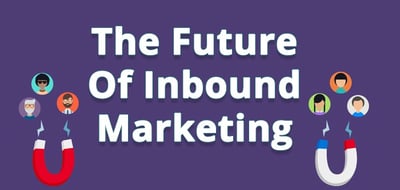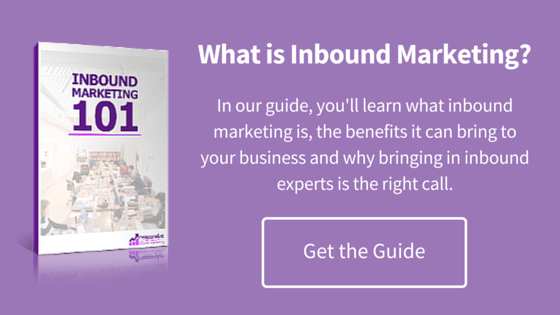As buyer preferences and the channels used to research and make purchases continue to change, marketers must adjust their approach to reach them wherever they are. Despite these changes, the inbound marketing process of attracting customers through relevant and useful content is not going anywhere.
32% of marketers agree that paid advertising, including print, outdoor and broadcast, is the most overrated marketing tactic, according to HubSpot’s 2017 State of Inbound report. This, and other traditionally outbound channels are not effective in reaching today’s buyer. 
As adoption of inbound marketing increases, the main thing that will impact its future are advances in technology and the way people like to buy. Over the past several years, we’ve seen the buying process move more and more online, with customers conducting a majority of their research independently before engaging with a salesperson.
These preferences have been heavily influenced by technology. The ability to get so much information online and the ease of doing has moved buyers in that direction; it’s just easier and faster in many cases.
Expect to see these trends, technologies, and new marketing innovations being used even more as inbound marketers look for better ways to attract their target audience.
Social Media
Facebook has 1.13 billion daily active users. If you want to engage with your audience and promote your content, social media continues to be an important channel. Emerging platforms like Snapchat, WhatsApp, and WeChat are changing how people communicate, away from options like email, though email is still an important inbound marketing channel.
[DOWNLOAD]

Virtual Reality
Virtual and augmented reality are emerging technologies that are not being used widely by marketers yet, but they likely will be. There is an important opportunity for companies to add value for their audiences through VR. It can be used to show how a product looks or works, or to create a branded experience.
Some of the more obvious applications are for ecommerce and retail companies to let customers experience products before they make a purchase.
Artificial Intelligence
Artificial intelligence definitely has a role in the future of inbound marketing, and it can help marketers to do their jobs better. 53% of marketers plan to adopt artificial intelligence in two years, according to Forbes. In day to day operations, there is the potential for use with automating repetitive tasks, as well as even using AI to write content.
Another benefit we’re seeing now is with AI’s ability to analyze large amounts of data, and use that data to provide insights into customer behavior. This will allow marketers to provide unique, personalized experiences for customers.
Hyper-personalization
People expect a unique experience that is customized for them, and in inbound the goal is always to provide relevant content. Although marketers have the capacity to offer this to a certain extent now, the use of big data and AI will make it possible to an even greater degree. The data that is gathered about each person can be used to create messaging and content that will speak to them and be tailored to their individual preferences.
Visual Content
In 2017, video content will represent 74% of all Internet traffic. Video has become a crucial inbound marketing tool. Visual and video content are a way to better engage with your audience and impact how people relate to your company. Your blog alone isn’t enough anymore.
Creating video content and using tools like Facebook live can also be a way to show your audience the humans behind the logo and create a relationship. You can use it to demonstrate your product or service, or create educational content by turning some of your old blog posts into short videos.
